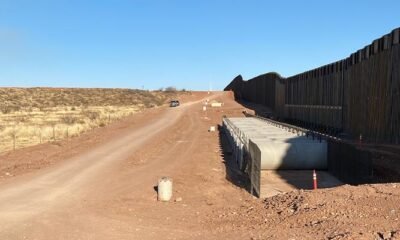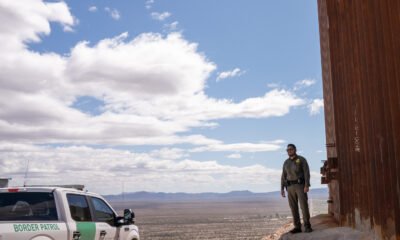border
Report Reveals One-Third of Border Patrol’s Billion-Dollar Surveillance System Useless

By Matthew Holloway |
A recent report has amplified criticisms of the Biden-Harris administration’s border security efforts, revealing significant shortcomings in the nation’s surveillance infrastructure. An internal memo from U.S. Customs and Border Protection (CBP), obtained by NBC News, disclosed that approximately 30% of the vital border surveillance system is currently out of service.
This malfunction affects nearly 150 of the 500 cameras deployed along the U.S.-Mexico border. NBC reported that the extensive outage results from “severe technical problems” impacting the Remote Video Surveillance System, which has been operational since 2011. Anonymous Border Patrol officials attribute the failures to outdated technology and unresolved repair issues.
According to the memo, many surveillance areas remain unmapped due to operational gaps, despite some repairs initiated early in October. Two CBP officials indicated that over 150 repair requests are pending, leaving substantial surveillance blind spots. A CBP spokesperson acknowledged the installation of 300 new advanced technology towers but did not directly address the specific outages highlighted in the report.
The spokesperson emphasized ongoing efforts to incorporate artificial intelligence and machine learning into CBP operations, with the aim of reducing reliance on outdated systems. However, the effectiveness of these technologies remains highly questioned.
Cost overruns have plagued the project since its inception, with an initial $1 billion investment in 2010 leading to poor performance assessments. A 2017 GAO report cited significant concerns regarding the implementation of the SBInet systems and ultimately halted further installations.
In response to the recent findings, the Electronic Frontier Foundation (EFF) commented that the problems with border surveillance are well-documented. EFF investigations director Dave Maas pointed out that congressional shock at the memo’s contents is misplaced; he stated, “Surveillance at the U.S.-Mexico border is a wasteful endeavor that is ill-equipped to respond to an ill-defined problem.”
Maas referenced a 2021 DHS Inspector General report, noting ongoing challenges for CBP, including inadequate personnel and unaddressed security vulnerabilities within their systems. These deficiencies could hamper efforts to detect and prevent illegal border crossings that threaten national security.
In a bid to address these issues, the Arizona Border Surveillance Technology Plan and the Southwest Border Technology Plan were initiated, with a budget of around $6 billion. However, the integration of these systems into a cohesive surveillance network in 2022 appears to have yielded minimal improvements. Maas criticized border authorities for continuing to advocate for unproven AI technologies, suggesting they are ineffective solutions to longstanding operational failures.
Matthew Holloway is a reporter for AZ Free News. Follow him on X for his latest stories, or email tips to Matthew@azfreenews.com.


















